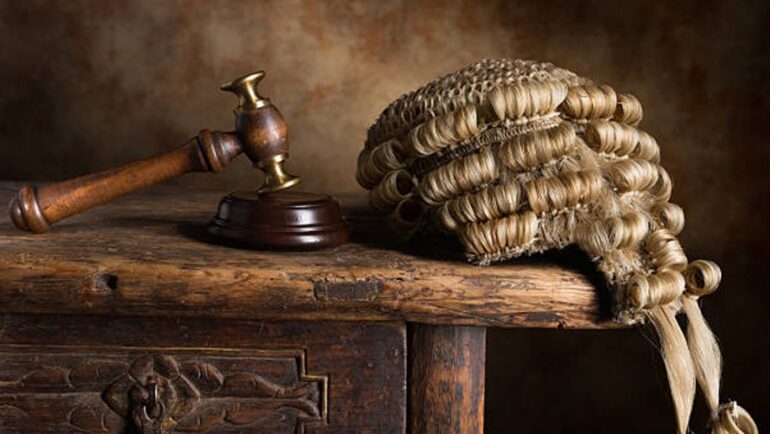TL;DR:
- British and Welsh judges have received approval to utilize AI tools to enhance their legal tasks.
- The Courts and Tribunals Judiciary has issued guidelines allowing AI’s use while cautioning against case research or legal examinations.
- Head of Civil Justice, Geoffrey Vos, emphasizes responsible AI use, with judges maintaining accountability for their work.
- The guidelines suggest AI could potentially aid in resolving low-level legal disputes, but confidence in AI for legal issues remains a concern.
- Debate continues on legal restrictions surrounding AI in the legal field, with apprehensions about potential misuse.
- Europe has issued ethical AI guidelines for court systems, while the United States lacks official AI guidance in its federal courts.
- These guidelines are the first published AI-related directives in the English language.
- AI is viewed as a valuable tool for judges and court workers with heavy workloads, especially for handling background materials and briefs.
- AI can assist with routine tasks, but should not be relied upon for finding new, unverified information or providing in-depth analysis.
Main AI News:
British and Welsh judges have taken a significant step forward in embracing artificial intelligence (AI) to enhance their legal endeavors. Under the purview of the Courts and Tribunals Judiciary, the regulatory body overseeing the judicial systems in Britain and Wales, new guidelines have been introduced regarding the utilization of AI tools. This development underscores the judiciary’s commitment to harnessing the potential of AI while maintaining a cautious approach.
The guidelines, issued last month, approved the judicious use of AI in assisting judges with their routine responsibilities. However, a clear demarcation has been set – AI is not to be employed for case research or legal examinations. The rationale behind this restriction lies in the recognition that AI technology, if mishandled, can generate false, misleading, or biased information.
Geoffrey Vos, the Head of Civil Justice in England and Wales, emphasized the intention to permit “the careful use of AI” to support judges in specific aspects of their roles. Yet, he concurrently stressed the need for judges to safeguard the trustworthiness of their work and take full personal responsibility for their outputs.
In an interview with Reuters, Vos affirmed that judges possess the requisite discernment to differentiate between authentic arguments and those generated by AI when evaluating evidence. “Judges are trained to decide what is true and what is false, and they are going to have to do that in the modern world of AI just as much as they had to do that before,” he asserted.
Vos envisages a future where AI could potentially contribute to the resolution of minor legal disputes, potentially alleviating the backlog of unresolved cases within the justice system. He expressed an open-minded perspective, stating, “I rule nothing out as to what may be possible.” Nevertheless, he acknowledged that the current lack of confidence in AI’s ability to independently resolve legal issues among the populace and businesses remains a challenge.
Ryan Abbott, a law professor at the University of Surrey and the author of “The Reasonable Robot: Artificial Intelligence and the Law,” highlighted the ongoing debate surrounding the legal restrictions on AI. Concerns within the legal community about the potential misuse of AI by lawyers and judges suggest that the disruption caused by AI in judicial activities may progress at a slower pace compared to other domains.
While some court authorities established rules regarding AI usage years ago, in 2019, the European Commission issued ethical guidelines for the application of AI in court systems. Although these guidelines may not align with the latest technological advancements, they offer insights into accountability and risk mitigation associated with AI tools.
Contrastingly, the United States has not established official guidance for AI deployment within the federal court system. However, U.S. Supreme Court Chief Justice John Roberts recently engaged in discussions regarding the pros and cons of AI technology in a report on the high court’s activities in 2023. Individual courts and judges at both the federal and local levels in the U.S. are likely crafting their own AI-related rules.
Cary Coglianese, a law professor at the University of Pennsylvania, noted that the guidelines enacted by Britain’s judiciary constitute the “first, published set of AI-related guidelines in the English language.” He speculated that “many judges” had already cautioned their staff about the potential pitfalls of AI, such as the generation of false information and potential privacy infringements.
The new British guidance affirms that judges and court personnel facing heavy workloads and tasked with crafting extensive decisions can effectively utilize AI as a valuable tool. This is particularly relevant for those required to compile background materials or create briefs based on existing information. In addition to facilitating tasks such as emails and presentations, judges have been advised to leverage AI to swiftly retrieve familiar information.
However, the guidelines include a caveat – AI tools should not be employed to unearth new information that lacks independent verification. Furthermore, the judiciary’s guidance underscores that AI technology should not be utilized to provide intricate analyses or reasoning.
Conclusion:
The introduction of AI into the legal landscape of Britain and Wales marks a significant milestone in leveraging technology to streamline judicial processes while preserving the integrity of the legal system. It represents a nuanced approach to AI implementation that seeks to strike a balance between innovation and prudence. As the legal community continues to grapple with the implications of AI, these guidelines set a precedent for future developments in the intersection of law and technology.

